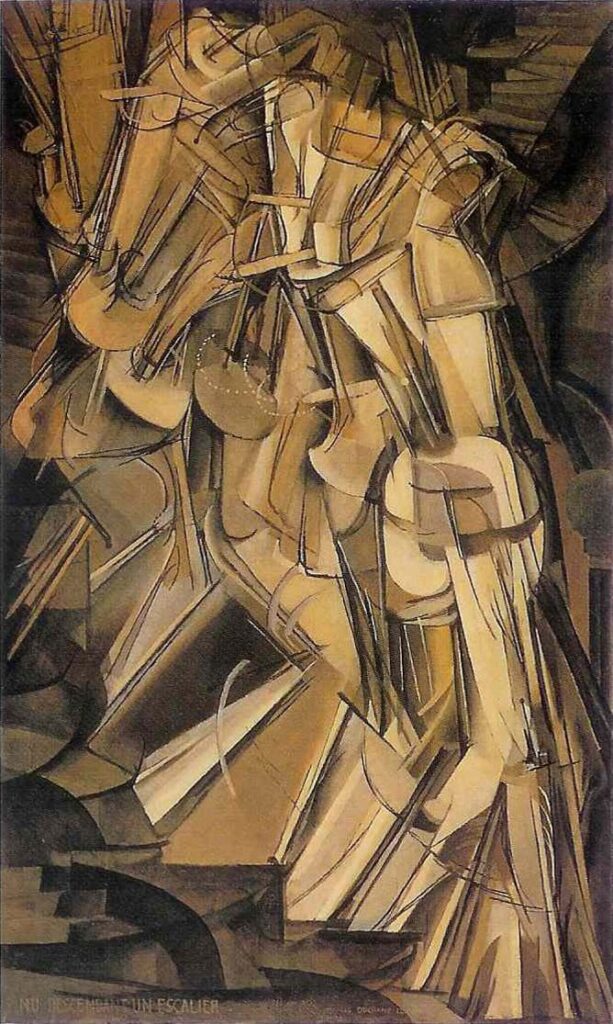Do you like modern art? Just because it’s “modern” doesn’t mean there’s anything new about it, of course. In fact, it’s kind of the opposite; most of the art produced in recent decades isn’t really “modern” — it’s more likely to be postmodern or contemporary. That doesn’t mean you can’t create modern art right now, though, because just like impressionism or romanticism or Pointillism, “modern” is a movement; a school of thought in art.
It started as far back as the 1860s, when artists started experimenting with abstract images and sort of changed their minds about the best way to depict what you see. The older idea was that what you see is part of a story; a narrative. You stand in a particular spot, see things in a particular way from that spot, and a painting, they thought (up until then) ought to present that narrative as truly as possible. But modernism was different. Lots of people can see the same scene, and each one of them will see it differently. Things in real life don’t sit still; they move, and so do you — so you see things from different points of view all by yourself. And what you see isn’t just what you see — it also represents other things, gives you ideas, brings different thoughts to mind even if you look at what seems to be the same thing again. Modernism tries to build all of that into a piece of art.
The world was changing in big ways in the last half of the 19th Century. It seemed from some perspectives like the whole world was getting mechanized, and everybody wondered what that would mean; where it would lead. Artists wondered too, and modern art was the result of their wonderment and experimentation about new ways to see and think about the world around us.
But not in the United States. The US was culturally and economically pretty close to Europe in many ways, but pretty far away in art, literature, and avant-garde thinking. In fact, even though it had been around for decades by the time the 20th Century arrived, most people in the US had never seen “modern art” or, as far as we know, wondered all that much about the changes coming into the world. The US was more of a workaday society; there was still a frontier to tame, and the majority of the country was rural. What cities there were, including New York, Boston, and Chicago, weren’t very old, and hadn’t established any sort of tradition of artistic or philosophical speculation. They weren’t Paris or Amsterdam. The business of America was, as the saying went, business. Commerce. Building ships and bridges, laying railroad tracks, selling and farming and mining. There was art, of course, but American art, like good, foursquare Americans, was realistic.
Then came February 17, 1913. That was the day the Armory Show opened in New York. More officially it was the International Exhibition of Modern Art, but because it was held in the enormous US National Guard Armory on 25th Street, everybody called it the Armory Show. It was the first time most Americans were introduced to European modern art, including avant-garde techniques like the Cubism of Picasso and Georges Braque, and the Fauvism of André Derain and Henri Matisse (the Fauvist style held that color was more important than realism or accurate representation). None of this was new in Europe — or not that new at least — but Americans weren’t used to seeing anything like these kinds of art, both paintings and sculptures.
Astonishing the general public was one of the goals of the show. It had been organized by a group of American artists who called themselves the Association of American Painters and Sculptors. There were only four of them when they first met in 1911, but by the next year the Association had more than two dozen members. The Armory Show was their first project, and they wanted to use it to “lead the public taste in art, rather than follow it.”
It took them a year to organize the show. They wanted it to be a big event, and so it was. They collected over 1,300 pieces of art, almost all loaned by artists and galleries in Europe. They had postcards printed as advertisements. In a clever bit of marketing, the postcards featured a painting by Marcel Duchamp, Nude Descending a Staircase, that was already somewhat infamous. Newspaper coverage ranged from ridicule to hostility to parody, but P.T.Barnum was right; there’s no such thing as bad publicity. Authorities like former President Teddy Roosevelt might huff and puff, claiming “that’s not art,” but it was at least close enough to art that nobody ever tried to shut the show down. Even better, most of the art was for sale, and the stuff actually began to be purchased. Some of it even by the Metropolitan Museum of Art that was just down the street from the Armory.
The show turned out to be hugely popular. After New York it traveled to Chicago, and then to Boston. The Association of American Painters and Sculptors achieved what they set out to do; tens of thousands of Americans visited the show, hundreds of thousands more heard and read about it, and it influenced a generation of American artists.
The Armory Show is commemorated regularly, and there’s a 2013 documentary film about it called The Great Confusion: The 1913 Armory Show. You can find it on Amazon (although not for streaming), or see information here.
One of the legacies of February 17, 1913, is that the US of 2024 does have traditions of boundary-pushing art, literature, and philosophy. Sometimes it only takes four people to start something big.

Nude Descending a Staircase by Marcel Duchamp, 1912
